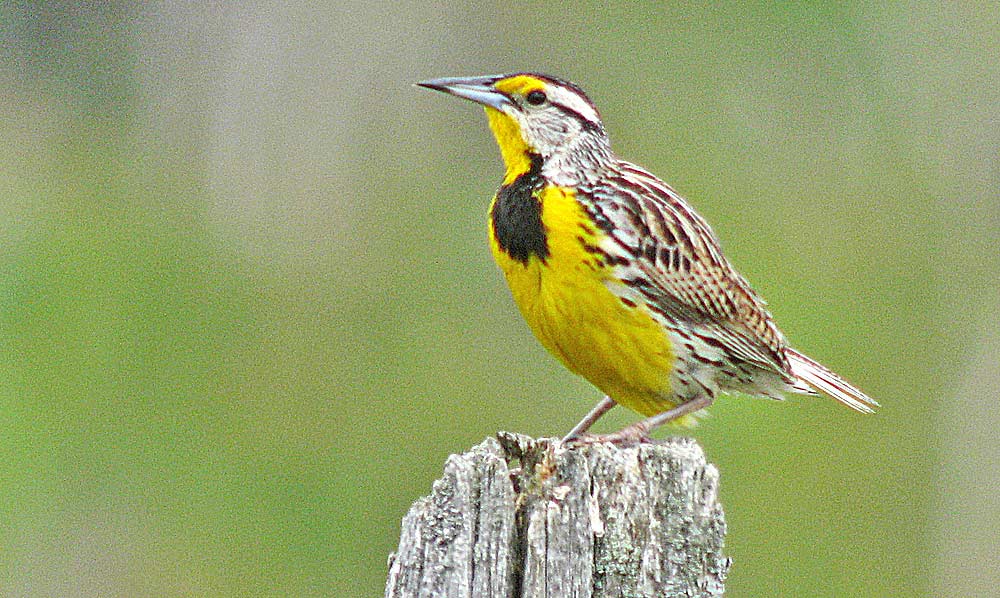|
Eastern Meadowlark in Carden
Ron
Pittaway
First
published in Toronto Ornithological Club Newsletter, December 2019,
No 292 |
|
 |
|
Eastern Meadowbird on the Carden Alvar. Photo by
Jean Iron |
|
|
|
The
Carden Alvar is a great location to see and hear the once-common
Eastern Meadowlark. Males arrive in early April and sing lustily
from the fields. Females arrive two to four weeks later. |
|
|
|
IDENTIFICATION:
Meadowlarks are unmistakable with a big black V on a yellow breast
and conspicuous white outer tail feathers. Distinctive flight
alternates rapid wing beats and short glides. The silhouette
suggests a starling. |
|
|
|
VOICE:
The Eastern Meadowlark is usually first detected by hearing its
far-carrying whistled Spring-of-the-Year song or its call
notes. A short raspy dzert call is given by males and
females. Both sexes also give a chattering alarm call in response to
intruders and predators. It sings from conspicuous perches such as
trees, shrubs, posts and fences, and sometimes from the ground. |
|
|
|
HABITAT:
Breeding birds prefer expansive grasslands with scattered shrubs and
a good mixture of wildflowers and other forbs. Moderate grazing by
cattle has positive effects on meadowlark habitat providing a
variety grass heights and structure for nesting, roosting and
feeding. Meadowlarks eat invertebrates and seeds on the ground. |
|
|
|
CONSERVATION:
The Eastern Meadowlark
is declining in Ontario and much of its range. It
was listed as Threatened
in 2011 by the
Committee on the Status of Endangered
Wildlife in Canada (COSEWIC). The causes of the
decline are the conversion of grasslands to intensive croplands,
early haying, plant succession, reforestation and urban sprawl.
It is likely to become Endangered if the causes of the
decline are not reversed. The Carden Alvar is one of the few places
in Ontario with protected habitat for Eastern Meadowlarks and other
grassland birds. |
|
|
|
BEST PLACE:
Wylie Road north to the viewing blind is the best area to see
Eastern Meadowlarks. They are also widespread and frequent elsewhere
in Carden. |
|
|
|
WESTERN MEADOWLARK:
There are occasional records of Western Meadowlark in Carden.
Compared to the skittish behaviour of Eastern Meadowlarks, Westerns
are often tamer and easier to see well. They are best told from
Easterns by their different song and calls. The song is loud
bubbling flute-like notes and one call is a throaty blackbird-like
chuck. Falls (2000) wrote “Despite the tendency of
meadowlarks to learn each other’s songs and calls, any meadowlark in
southern Ontario that gives any Western songs or has Western calls
is almost certain to be a Western.” Hybrid meadowlarks are very rare
and most are sterile. |
|
|
|
ACKNOWLEDGMENTS:
I thank Michel Gosselin for comments and Jean Iron for the photo |
|
|
|
REFERENCE:
Falls, Bruce. 2000. Meadowlarks in Ontario. OFO News
18(2):8-9 |
|
|
|
|
|
|